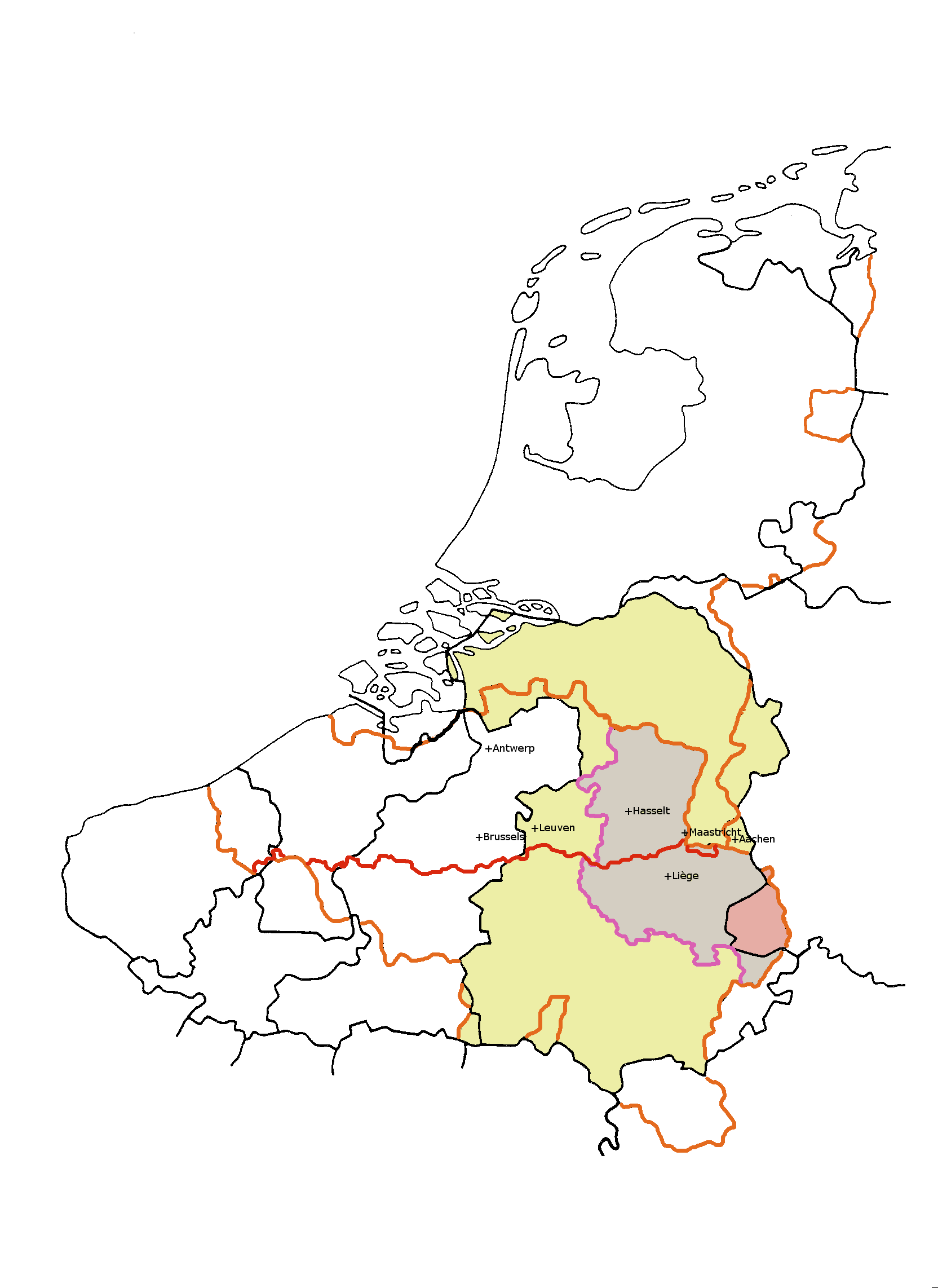|
Clodio
Chlodio (probably died after 450), also Clodio, Clodius, Clodion, Cloio or Chlogio, was a Franks, Frankish king who attacked and then apparently ruled Roman-inhabited lands around Cambrai and Tournai, near the modern border of Belgium and France. He is known from very few records. His influence probably reached as far south as the River Somme. He was therefore the first Frankish ruler to become established so deep within the Roman empire, and distant from the border regions where the Franks had already been established for a long time. He was possibly a descendant of the Salian Franks, who Roman sources report to have settled within Texandria in the 4th century. Gregory of Tours reported that in his time people believed that the Merovingian dynasty, who were still ruling, were descended somehow from Chlodio. Name ''Chlodio'' is a short form of Frankish language, Frankish names such as ''*Hlodowig'' (Clovis (given name), Clovis) or *''Hlodhari'' (Chlothar), which are derived fr ... [...More Info...] [...Related Items...] OR: [Wikipedia] [Google] [Baidu] |
Cambrai
Cambrai (, ; pcd, Kimbré; nl, Kamerijk), formerly Cambray and historically in English Camerick or Camericke, is a city in the Nord department and in the Hauts-de-France region of France on the Scheldt river, which is known locally as the Escaut river. A sub-prefecture of the department, Cambrai is a town which had 32,501 inhabitants in 2018. It is in the heart of the urban unit of Cambrai with 46,772 inhabitants. Its functional area, a more extensive range, included 94,576 inhabitants in 2018.Comparateur de territoire: Aire d'attraction des villes 2020 de Cambrai (108), Unité urbaine 2020 de Cambrai (59403), Commune de Cambrai (59122) INSEE With |
Merovech
Merovech (french: Mérovée, Merowig; la, Meroveus; 411 – 458) was the King of the Salian Franks, which later became the dominant Franks, Frankish tribe, and the founder of the Merovingian dynasty. Several legends and myths surround his person. He is proposed to be one of several barbarian warlords and kings that joined forces with the Roman general Flavius Aetius, Aetius against the Huns under Attila at the Battle of the Catalaunian Plains in Gaul in 451. His grandson Clovis I became the founder of the Frankish kingdom. The family of Childeric and Clovis, the first Frankish large-scale royal dynasty called themselves Merovingians ("descendants of Meroveus") after him, and this was known to historians in the following centuries, but no more contemporary evidence exists. The most important such written source, Gregory of Tours, recorded that Merovech was said to be descended from Chlodio, a roughly contemporary Frankish warlord who pushed from the Silva Carbonaria in modern cent ... [...More Info...] [...Related Items...] OR: [Wikipedia] [Google] [Baidu] |
Pannonia
Pannonia (, ) was a province of the Roman Empire bounded on the north and east by the Danube, coterminous westward with Noricum and upper Italy, and southward with Dalmatia and upper Moesia. Pannonia was located in the territory that is now western Hungary, western Slovakia, eastern Austria, northern Croatia, north-western Serbia, northern Slovenia, and northern Bosnia and Herzegovina. Name Julius Pokorny believed the name ''Pannonia'' is derived from Illyrian, from the Proto-Indo-European root ''*pen-'', "swamp, water, wet" (cf. English ''fen'', "marsh"; Hindi ''pani'', "water"). Pliny the Elder, in '' Natural History'', places the eastern regions of the Hercynium jugum, the "Hercynian mountain chain", in Pannonia and Dacia (now Romania). He also gives us some dramaticised description of its composition, in which the proximity of the forest trees causes competitive struggle among them (''inter se rixantes''). He mentions its gigantic oaks. But even he—if the passage in q ... [...More Info...] [...Related Items...] OR: [Wikipedia] [Google] [Baidu] |
Gaul
Gaul ( la, Gallia) was a region of Western Europe first described by the Romans. It was inhabited by Celtic and Aquitani tribes, encompassing present-day France, Belgium, Luxembourg, most of Switzerland, parts of Northern Italy (only during Republican era, Cisalpina was annexed in 42 BC to Roman Italy), and Germany west of the Rhine. It covered an area of . According to Julius Caesar, Gaul was divided into three parts: Gallia Celtica, Belgica, and Aquitania. Archaeologically, the Gauls were bearers of the La Tène culture, which extended across all of Gaul, as well as east to Raetia, Noricum, Pannonia, and southwestern Germania during the 5th to 1st centuries BC. During the 2nd and 1st centuries BC, Gaul fell under Roman rule: Gallia Cisalpina was conquered in 204 BC and Gallia Narbonensis in 123 BC. Gaul was invaded after 120 BC by the Cimbri and the Teutons, who were in turn defeated by the Romans by 103 BC. Julius Caesar finally subdued the remaining parts of Gau ... [...More Info...] [...Related Items...] OR: [Wikipedia] [Google] [Baidu] |
Civitas Tungrorum
The ''Civitas Tungrorum'' was a large Roman administrative district dominating what is now eastern Belgium and the southern Netherlands. In the early days of the Roman Empire it was in the province of Gallia Belgica, but it later joined the neighbouring lower Rhine River border districts, within the province of Germania Inferior. Its capital was ''Aduatuca Tungrorum'', now Tongeren. Like many other Roman administrative districts, it was named after the tribal grouping that lived there, the Tungri, although that name is not known from the area before it became part of the Roman Empire. Also like other such districts, it became the basis for a medieval bishopric, but the bishops of Tongeren moved first to nearby Maastricht and then to Liège. Location The geographical boundaries of the ''civitas'' probably corresponded at least roughly to the area of the large medieval Catholic diocese of Liège, which was reduced in 1559. In modern terms this large diocese contained approximately th ... [...More Info...] [...Related Items...] OR: [Wikipedia] [Google] [Baidu] |


